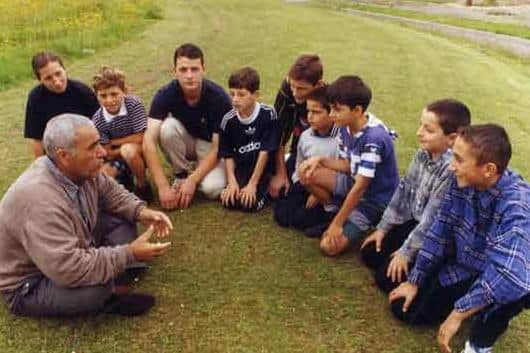Why is the exclusion rate for Sheffield’s Roma pupils more than six times higher than their white peers?
and live on Freeview channel 276
Data from the Department for Education shows that in Sheffield schools, one in five children from a Roma background received at least one exclusion in the 2018-19 school year, compared with less than three percent of white British children.
Sheffield now has the second-highest population of Czech and Slovak Roma children in the country and teachers have identified key issues and barriers concerning the attendance and academic achievements of these children.
Advertisement
Hide AdAdvertisement
Hide AdDr Mark Payne, an academic at the University of Sheffield, said there were various issues including language and social barriers.


“English and, in particular, classroom English and the language of learning, is often lacking, despite them being often quite fluent in everyday spoken English,” he explained.
“Their interrupted schooling does not help, and some have shuttled between Slovakia and England.
“The finely regimented aspects of schooling, such as rules about uniform, jewellery, footwear, PE kit, exercise books, writing equipment and so on often prove a stumbling block.
Advertisement
Hide AdAdvertisement
Hide Ad“Home life is often quite crowded, rental accommodation quite basic, wifi not a given, so for example, during the pandemic, remote learning has been difficult and homework is often not done.”


Cambridge educated Mark, conducts research into the educational, linguistic and social integration of newly-arrived migrant pupils in schools, with a particular focus on children from Slovak Roma backgrounds.
He believes there are various reasons at play in explaining why the exclusion rate for Roma students is high not only in Sheffield, but in other cities across the UK too.
In Haringey and Bristol, Roma students were more than 10 times as likely to receive an exclusion, although their headcounts were lower than in Sheffield, with about 100 students each.
Advertisement
Hide AdAdvertisement
Hide AdMark suggested that changes in the structure of English schools should be considered.
He said: “We now have academies which seem more centrally directed with a standardised way of conducting teaching and learning, thus less forgiving of particular contexts.
“Schools focus on academic attainment, particularly in maths, English and science and any pupil not perceived to be a 'gain' in terms of potential league table place, tends to be overlooked.
“One way to increase league table positions is to decrease the pupils who will not make the grade.”
Advertisement
Hide AdAdvertisement
Hide AdMark said rules around uniform, punctuality and homework in the UK was in contrast to in Slovakia where pupils do not wear a school uniform, teachers move around while they stay put during lesson changeover, and the school day is shorter.
In 2014, Her Majesty’s Chief Inspector commissioned a report following a meeting with a group of Sheffield headteachers.
It identified that some parents did not want to send their children to school as they could not meet the cost of a school lunch, uniform or trips.
Some schools felt obliged to meet these costs, despite not being funded to do so, but others have worked with families to help them help themselves.
Advertisement
Hide AdAdvertisement
Hide AdThe pandemic is suggested to have played a part in the increase in children being excluded from school, however, it appears to have more negatively impacted children from minority ethnic backgrounds, which some say raises concerns over the ‘criminalisation of children’.